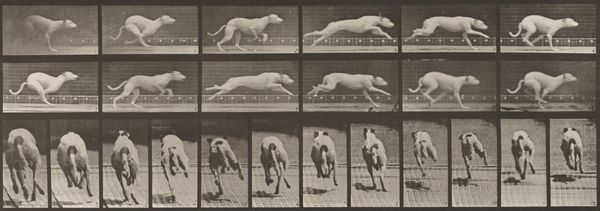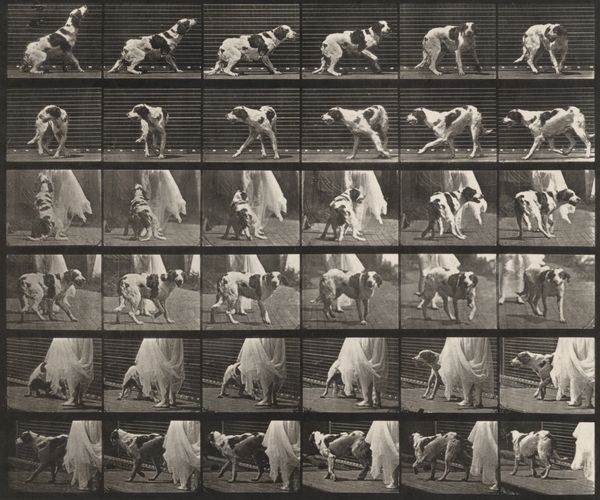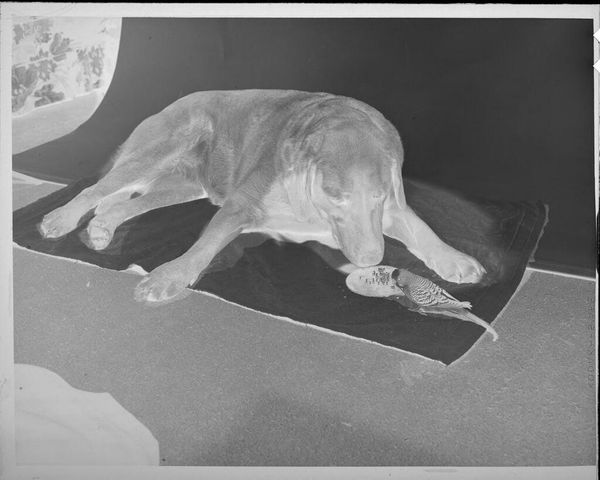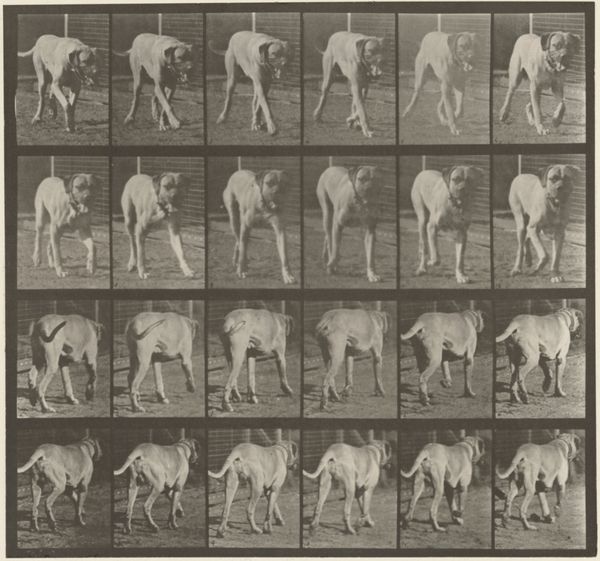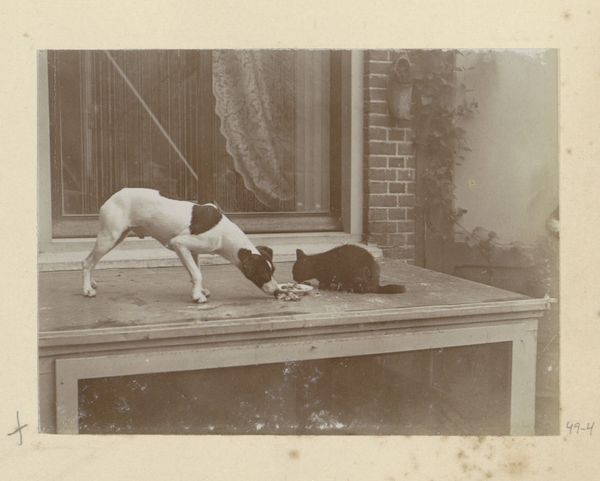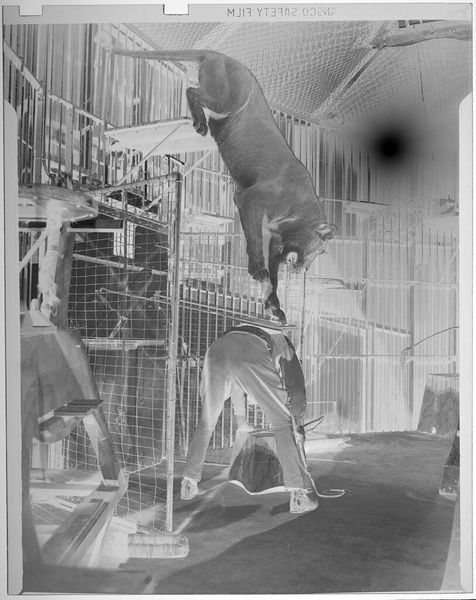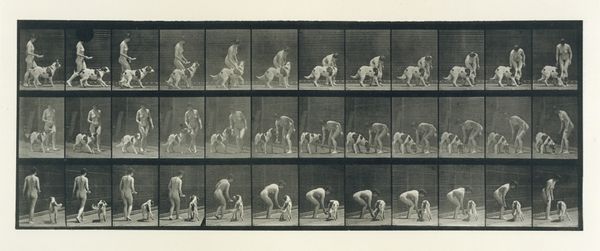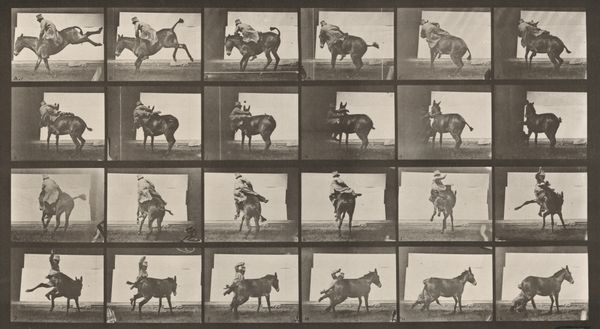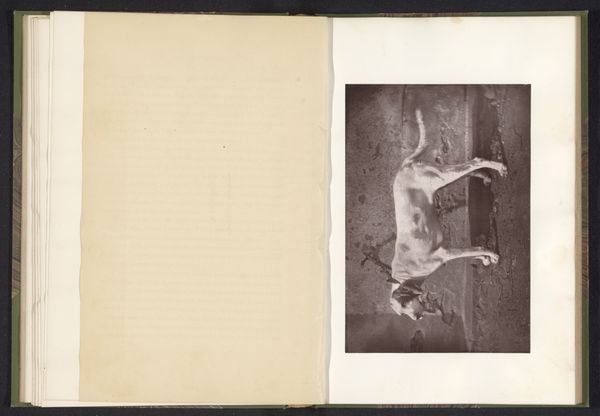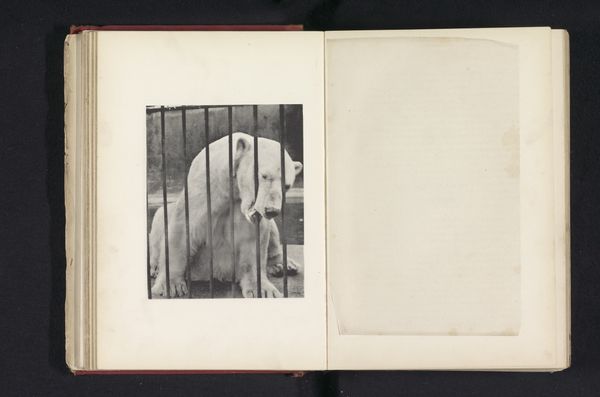
Plate Number 714. Dog; aroused by a torpedo; mastiff, Smith 1887
0:00
0:00
print, photography, gelatin-silver-print
#
animal
# print
#
photography
#
gelatin-silver-print
#
genre-painting
#
realism
Dimensions: image: 12.5 × 45.5 cm (4 15/16 × 17 15/16 in.) sheet: 46.1 × 61 cm (18 1/8 × 24 in.)
Copyright: National Gallery of Art: CC0 1.0
Curator: Here we have a fascinating gelatin silver print titled "Plate Number 714. Dog; aroused by a torpedo; mastiff, Smith," crafted in 1887 by Eadweard Muybridge. The grid format really draws you in, doesn't it? Editor: Absolutely! It's a study in restrained motion. At first glance, I see this beautiful creature in a stark setting but something about how fragmented it is suggests a feeling of urgency. The dog appears almost frozen in motion. Curator: Indeed! Muybridge’s work was groundbreaking in its time. It emerged during a period of intense scientific inquiry into the mechanics of movement. Think about the context. His photos, published as part of the “Animal Locomotion” series, weren't simply art, but were intended to be used as objective references. Editor: I wonder about this mastiff, Smith. It’s clearly reacting to *something*. But why frame the animal next to a dark grid? Could there be some metaphorical intent, like an urban life trapping animals from its wild ways? Curator: That's an interesting interpretation, especially if we consider how industrialization transformed landscapes during this period. However, consider how the grid serves to standardize the movement; isolating it from any potential outside influence to better allow scientists the access to accurate observations. The real question is, what exactly constitutes "arousal by a torpedo"? It suggests a surprising intrusion, but that term meant something different back then. Perhaps a sudden sharp noise, triggering a very physical reaction? Editor: Precisely! What better symbol of rapid, technological change than a torpedo! It makes you wonder about this era and how newfound mobility from motorized machines changed animal symbolisms. Perhaps to audiences of the day, viewing this image meant seeing this dog, our oldest friend, overcome by contemporary devices? It feels like the mastiff represents nature disrupted by technological progress. Curator: Fascinating. Viewed in that context, the study of motion turns into an allegory for societal shift! But it's worth keeping in mind Muybridge’s specific objectives. He worked at the intersection of art, science, and technological innovation. Ultimately, whether documentary or artistic in aim, the series marks an important turn in the depiction of the natural world. Editor: A crucial point, certainly! I’ll now regard both science and social transformation as key players to its compelling tableau. Thank you!
Comments
No comments
Be the first to comment and join the conversation on the ultimate creative platform.


